Schemes for connecting solar panels of a country house
So, the first thing you should be aware of is what a solar power plant kit consists of. The main elements of the system are represented by the following devices: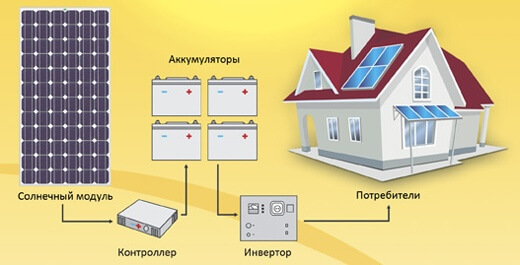
- Solar panels or as they are also called solar cells, panels or photovoltaic converters. They are needed to convert sunlight into electricity.
- Solar panel controller. Monitors the charge and discharge of the battery. There are different types - On / Off, PWM, MPPT. Controllers are listed in order of increasing complexity and efficiency of charge algorithms. MPPT - make it possible to achieve greater efficiency due to the fact that they find the optimal voltage and current parameters for pumping the maximum possible power into the batteries. This is based on an analysis of the current operating mode and the current-voltage characteristic of the solar panel. The main task of the controller is to monitor the battery charge in order to prevent overcharging or excessive discharge. In simple words, when the battery is fully charged or discharged, the batteries are disconnected from the panel or the load.
- The battery is designed to store the generated electricity.
- Inverter - converts 12 Volts into 220 variables, necessary for the operation of home electrical appliances, lighting systems and household appliances.
We draw your attention to the fact that between all devices: the controller, inverter, load and battery, it is advisable to put fuses that protect the system when short circuit in the network!
In the simplest version, the scheme for connecting solar panels to the controller, battery, inverter and load is as follows: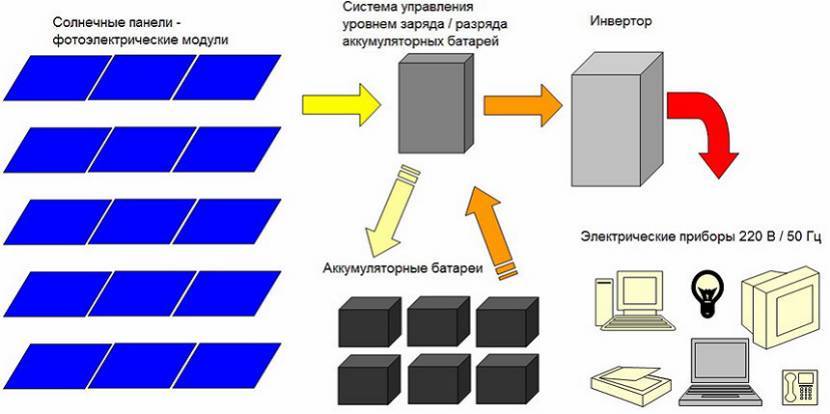
As you can see, there are no special difficulties in connecting, the main thing is to observe the polarity and connect all the plugs to the necessary connectors on the controller. In this case, it is very difficult to mix something up. But if you decide to use electricity from the sun at the same time as a stationary network, the scheme for connecting solar panels to the house’s power grid should look like this:
Here it is necessary to clarify: the reserved load is backup lighting, a boiler and, for example, a refrigerator. Not redundant - household appliances, light in the house, etc. The larger the battery capacity, the longer the backup devices will be able to work offline!
We figured out the scheme for connecting solar panels to an AC network.Now we need to consider an equally important part of the issue - the correct connection of the panels to each other.
If you have a ready-made solar panel, then you need to find out its output voltage and connect it to the controller, but they come in 12 and 24V and 12 / 24V. If your solar panel is designed to work with 12V batteries and controllers you need to connect them directly. Sometimes you need to connect the batteries in series to get the right voltage. Therefore, we consider three main connection methods. The same recommendations for assembling a solar panel with your own hands from individual cells.
- Parallel. In this case, you need to connect the same terminal with each other: plus to plus, minus to minus. As a result, the output voltage remains the same 12 Volts, but the current supplied increases.
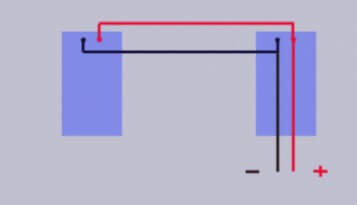
- Sequential. Plus of the first panel you need to connect to the minus of the second. The remaining plus of the second battery and minus the first must be connected to the controller. The result is an output of 24 volts.
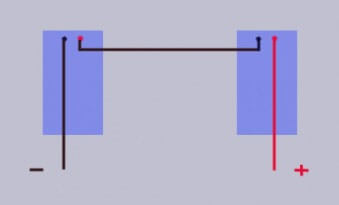
- Mixed (serial-parallel). This scheme for connecting solar panels involves connecting several groups of batteries. Inside each group, devices are connected in parallel, and only then sequentially, as shown in the picture. This connection option allows you to achieve the desired voltage and output current (power). For connecting the batteries, the recommendations are similar: with a series connection, the voltage rises, and with a parallel connection, the capacitance and the supplied current.
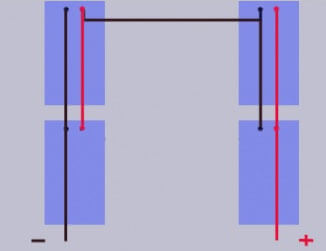
We also recommend watching a video that clearly explains the entire connection sequence:
That's all I wanted to tell you about what are the schemes for connecting solar panels of a country house to an electric AC network. As you can see, the wiring is not complicated, the main thing is to be careful and decide what load should be at the output. A very important point at which I would like to complete this article - in no case do not connect the inverter directly to the controller. Such a connection would be detrimental to a home power station!
Similar materials:

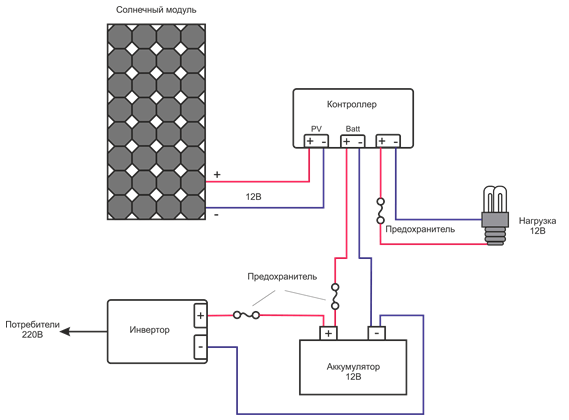
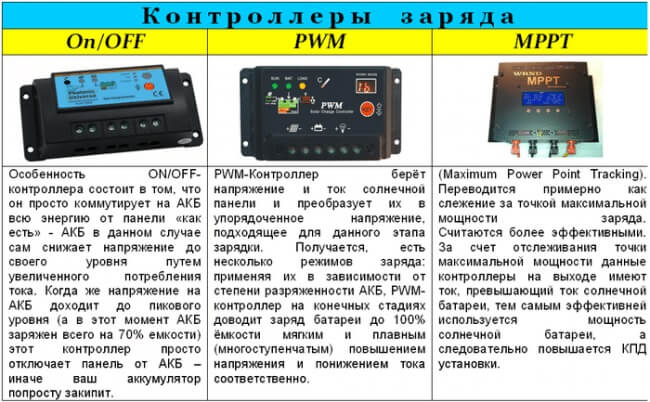
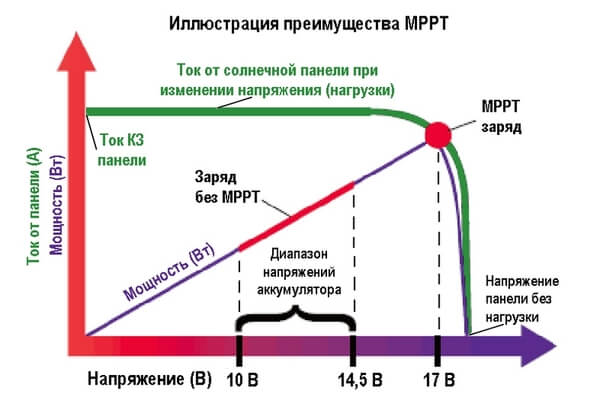
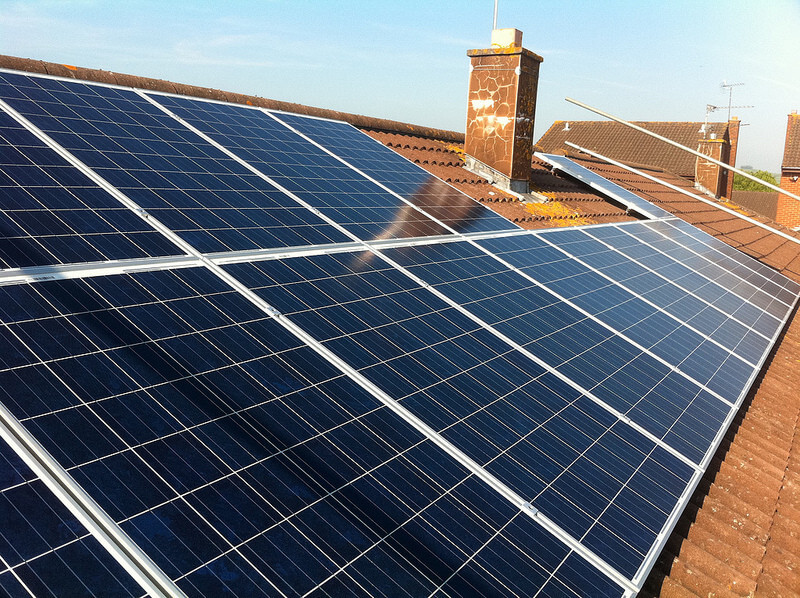


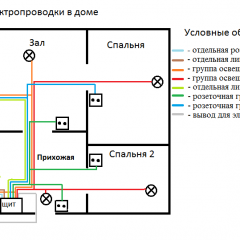
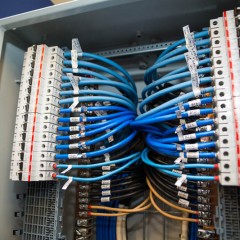
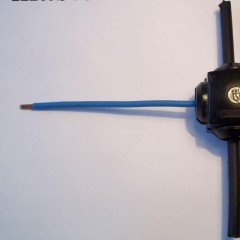

And when you connect the battery inverter (from which 220v goes) to the mains, the phase and zero of the inverter with the phase and zero of the mains themselves are somehow synchronized?
And how to find out in this situation the accumulated from the batteries, or is it stupidly eating electricity from the network?